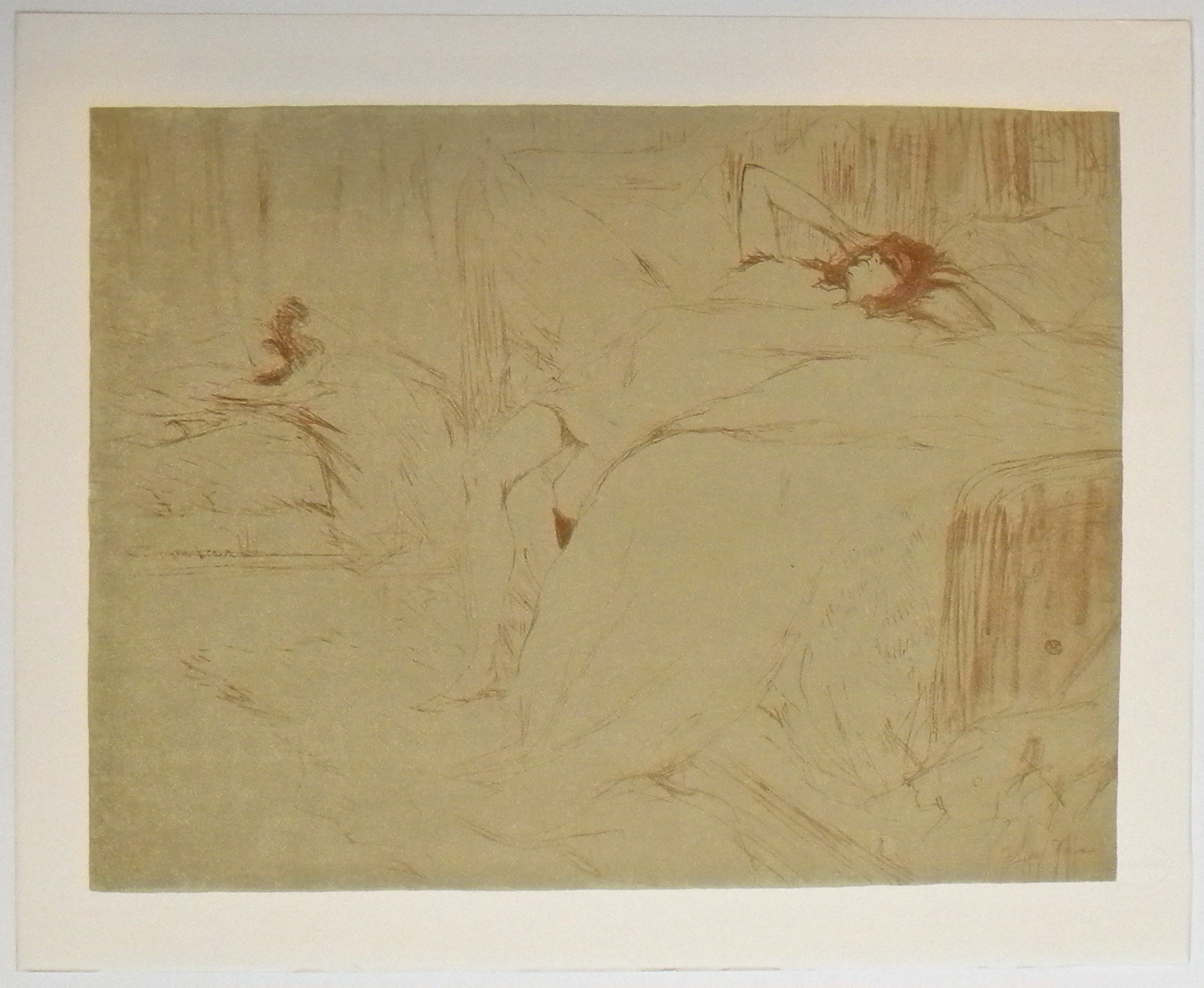Toulouse-Lautrec lithograph "Lassitude"
Artist: Henri de Toulouse-Lautrec
Price:
$300.00
Medium: Prints




More Details
Creation Date: 1990
Materials: lithograph
Dimensions: 19" x 23"
Finish: Unframed
About the Item: Medium: lithograph (after the original). In 1896 Toulouse-Lautrec executed his famous "Elles" portfolio; this is a beatiful limited edition replica published in Paris by Claude Tchou and the Bibliotheque Nationale. This impression was printed on watermarked Arches laid paper, in a limited edition of 550 issued in 1990 and bears the official dry stamp of the Bibliotheque Nationale. The image size is 15 1/2 x 20 1/2 inches (390 x 520 mm) and the full sheet measures 19 x 23 inches (475 x 590 mm). Signed in the stone; not hand-signed. For the collector who cannot spend a small fortune on the first edition Toulouse-Lautrec lithograph, this presents an affordable alternative.

About The Artist
Henri De Toulouse-Lautrec (1864-1901) was born on November 24th in Albi, France to an aristocratic family. The artist's parents were first cousins, and inbreeding might have been the cause of many of Toulouse-Lautrec’s physical ailments. Henri Toulouse-Lautrec’s life was short; he died on September 9th, 1901, less than three months before his thirty-seventh birthday, from complications from alcoholism and syphilis. Although Toulouse-Lautrec died tragically at thirty-six and his career lasted just over a decade, he produced many influential works of art in an instantly recognizable style. From 1891-1901, the artist produced nearly 350 lithographic posters, editions, portfolios, and illustrations for journals and theatre programs. Significantly, his career coincided with the birth of modern printmaking and the explosion of nightlife culture. Lautrec was an innovator of lithographic techniques and adopted an avant-garde style in both his paintings and prints. For example, Lautrec employed the splattered ink technique called crachis to dramatic effect in his prints. He was heavily influenced by Japanese ukiyo-e prints which feature areas of flat color with bold outlines, silhouettes, cropped compositions, and oblique angles. And his choice of subject matter--actors, actresses, dancers, prostitutes, and those on the fringes of society--can be likened to the "floating world" of Edo-period Japan (1603-1867). In 1882, Toulouse-Lautrec moved to the Montmartre neighborhood of Paris. Montmartre boasted a thriving bohemian culture that was driven by its critique of bourgeois society. For Lautrec, who was shunned by aristocratic and bourgeois society and in turn rejected it, Montmartre was a haven and there is a certain elision between the artist himself and his portrayal of his subjects.
More Galleries to Explore














 Facebook
Facebook
 Twitter
Twitter
 Email
Email
















